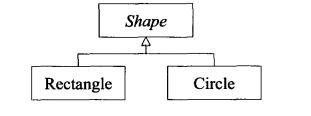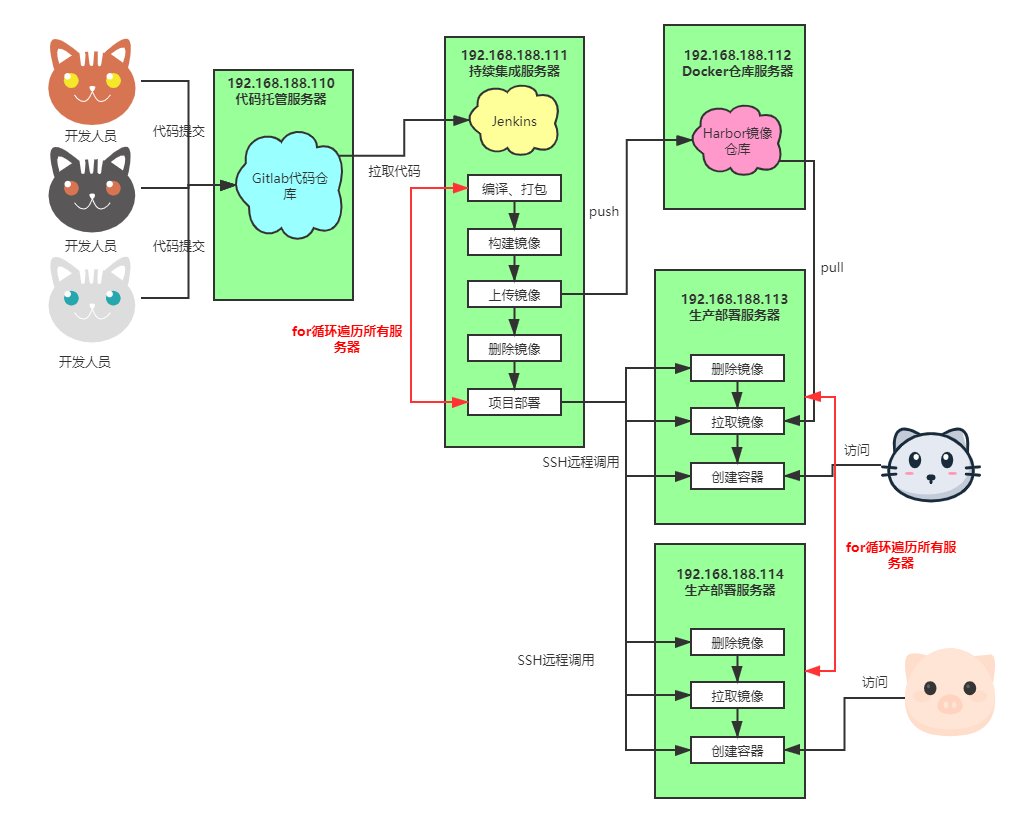c++实现LL1文法
c++实现LL1文法
- 简介
- 参考代码
- 测试
- 输入数据
- 截屏
简介
利用c++计算文法的firsr,follow,select 集合,然后判断文法是否为LL1文法,并构造预测分析表,对输入字符串进行分析
参考代码
#include <iostream>#include <map>#include <vector>#include <set>#include <list>#include <cstdio>#include <iomanip>using namespace std;typedef char grammarType;grammarType start, S; //开始符号,S用来作为输入map<grammarType, int> ter; //终结符集合vector<grammarType> terInx; //通过索引查找终结符map<grammarType, int> nonter; //非终结符集合vector<grammarType> nontInx; //通过索引查找非终结符vector<grammarType> language; //需要进行分析的语言,即输入字符串int terNum, nontNum, proSize, Lsize; //终结符数目,非终结符数目,产生式数目,语言的长度struct Production{int leftPart; //左部非终结符的索引vector<int> rightPart; // 右边产生式索引vector<bool> flag; //标记右边相关产生式是终结符(false),非终结符(false)};vector<Production> pro; //产生式vector<int> *nontPro; // 各个非终结符的产生式的集合vector<bool> proEmpty; //记录各个产生式能否推出空 true能,false不能set<int> *First; //各个非终结符的First集合#define FirstIt(x) for (itSet = First[(x)].begin(); itSet != First[(x)].end(); ++itSet)set<int> *Follow; // 各个非终结符的Follow集合#define FollowIt(x) for (itSet = Follow[(x)].begin(); itSet != Follow[(x)].end(); ++itSet)set<int> *Select; //各个产生式的Select的集合#define SelectIt(x) for (itSet = Select[(x)].begin(); itSet != Select[(x)].end(); ++itSet)set<int>::iterator itSet; // set迭代集合struct edge{int v, s; //u->v一条边 s代表状态,1 终结符,edge(int v, int s) : v(v), s(s) { }}; //利用关系图法求解Firstvector<int> *graph; //图int *inDe; //计算入度vector<int> top; //定义出栈顺序,即计算顺序vector<int> nontEmpty; //能否推出空,0未定,1代表是,2代表否vector<int> *analyzeTable; //构造LL1文法的预测分析表struct Sign{int Inx;bool flag; //符合索引 表示文法分析栈中的字符是否为非终结符 true 非终结符Sign(int a, bool b) : Inx(a), flag(b) { }Sign() { }};vector<Sign> analysisStack; //用数组模拟LL1文法分析栈#define out(width, str) cout << setw((width)) << setiosflags(ios::left) << ((str))void getEmpty(); //求非终结符能否推出空集void geFirst(); //计算文法First集合void getFollow(); //计算文法Follow集合void getSelect(); //计算产生式的Select集合bool judegLL1(); //判断是否为LL1文法void getAnalyzeTable(); //得到LL1文法的预测分析表void analysis(); //对所得语言进行分析int main(){cout << "请输入文法开始符合:";cin >> start;cout << "请输入非终结符的数目:";cin >> nontNum;First = new set<int>[nontNum];Follow = new set<int>[nontNum];nontPro = new vector<int>[nontNum];cout << "请依次输入非终结符:";for (int i = 0; i < nontNum; ++i){cin >> S;nonter[S] = i;nontInx.push_back(S);}cout << "请输入终结符的数目:";cin >> terNum;cout << "请依次输入终结符:(用二个符合表示空和结束符并放在末尾)";for (int i = 0; i < terNum; ++i){cin >> S;ter[S] = i;terInx.push_back(S);}cout << "请依次输入产生式的数目:";cin >> proSize;Select = new set<int>[proSize];proEmpty.insert(proEmpty.begin(), proSize, false);cout << "请依次输入产生式:";int t;Production p;for (int i = 0; i < proSize; ++i){cin >> S >> t;p.leftPart = nonter[S];nontPro[p.leftPart].push_back(i);for (int j = 0; j < t; ++j){cin >> S;if (nonter.find(S) != nonter.end()){p.rightPart.push_back(nonter[S]);p.flag.push_back(true);}else{p.rightPart.push_back(ter[S]);p.flag.push_back(false);}}pro.push_back(p);p.rightPart.clear();p.flag.clear();}getEmpty();geFirst();getFollow();getSelect();if (judegLL1() == false)return 0;getAnalyzeTable();cout << "请输入要分析的语言的长度: ";cin >> Lsize;cout << "请输入要分析的语言(带输入结束符):";for (int i = 0; i < Lsize; ++i){cin >> S;language.push_back(S);}analysis();}void getEmpty(){nontEmpty.clear();nontEmpty.insert(nontEmpty.begin(), nontNum, 0); //初始化vector<int> nonProNum(nontNum, 0);list<int> wait;int nul = terNum - 2, j, i, ltmp;for (int i = 0; i < proSize; ++i){for (j = 0, ltmp = pro[i].leftPart; j < pro[i].flag.size(); ++j){if (pro[i].flag[j] == false && pro[i].rightPart[j] == nul)nontEmpty[ltmp] = 1;if (pro[i].flag[j] == false)break;}if (j == pro[i].flag.size()){wait.push_front(i);nonProNum[ltmp]++;}}for (int i = 0; i < nontNum; ++i){if (nontEmpty[i] == 0 && nonProNum[i] == 0)nontEmpty[i] = 2;}list<int>::iterator itlist = wait.begin();while (itlist != wait.end()){ltmp = pro[*itlist].leftPart;if (nontEmpty[ltmp])itlist = wait.erase(itlist), nonProNum[ltmp]--;else++itlist;}itlist = wait.begin();while (!wait.empty()){if (itlist == wait.end())itlist = wait.begin();ltmp = pro[*itlist].leftPart;if (nontEmpty[ltmp]){itlist = wait.erase(itlist);continue;}for (j = 0, i = *itlist; j < pro[i].flag.size(); ++j){if (nontEmpty[pro[i].rightPart[j]] == 2){itlist = wait.erase(itlist);nonProNum[ltmp]--;if (nonProNum[ltmp] == 0)nontEmpty[ltmp] = 2;break;}else if (nontEmpty[pro[i].rightPart[j]] == 0){itlist++;break;}}if (j == pro[i].flag.size()){nontEmpty[ltmp] = 1;itlist = wait.erase(itlist);}}}void topSort(){int *sta = new int[nontNum];int p = 0, v, u;top.clear();for (int i = 0; i < nontNum; ++i)if (inDe[i] == 0)sta[p++] = i;while (p){v = sta[--p];top.push_back(v);for (int i = 0; i < graph[v].size(); ++i){u = graph[v][i];inDe[u]--;if (!inDe[u])sta[p++] = u;}}}void geFirst(){int i, j, ltmp, rtmp;delete[] graph;graph = new vector<int>[nontNum];delete[] inDe;inDe = new int[nontNum];for (i = 0; i < nontNum; ++i)inDe[i] = 0;for (i = 0; i < proSize; ++i){for (j = 0, ltmp = pro[i].leftPart; j < pro[i].flag.size(); ++j){rtmp = pro[i].rightPart[j];if (pro[i].flag[j]){graph[rtmp].push_back(ltmp);inDe[ltmp]++;if (nontEmpty[rtmp] == 2)break;}else if (rtmp != terNum - 2){First[ltmp].insert(rtmp);break;}}}topSort();for (i = 0; i < top.size(); ++i){for (ltmp = top[i], itSet = First[ltmp].begin(); itSet != First[ltmp].end(); ++itSet){for (j = 0; j < graph[ltmp].size(); ++j)First[graph[ltmp][j]].insert(*itSet);}}for (int i = 0; i < nontNum; ++i)if (nontEmpty[i] == 1)First[i].insert(terNum - 2);cout << "各个非终结符的First集为: " << endl;for (int i = 0; i < nontNum; ++i){cout << "First( " << nontInx[i] << " ) = { ";FirstIt(i) cout << terInx[*itSet] << " ";cout << "}\n";}}void getFollow(){int i, j, ltmp, rtmp, folFlag;delete[] graph;graph = new vector<int>[nontNum];delete[] inDe;inDe = new int[nontNum];for (i = 0; i < nontNum; ++i)inDe[i] = 0;Follow[nonter[start]].insert(terNum - 1);for (i = 0; i < proSize; ++i){folFlag = true;ltmp = pro[i].leftPart;for (j = pro[i].flag.size() - 1; j > 0; --j){rtmp = pro[i].rightPart[j];if (pro[i].flag[j - 1]){if (pro[i].flag[j]){FirstIt(rtmp) if (*itSet != terNum - 2) Follow[pro[i].rightPart[j - 1]].insert(*itSet);}elseFollow[pro[i].rightPart[j - 1]].insert(rtmp), folFlag = false;}if (folFlag){graph[ltmp].push_back(rtmp);inDe[rtmp]++;if (nontEmpty[rtmp] == 2)folFlag = false;}}if (pro[i].flag[0] && folFlag){graph[ltmp].push_back(pro[i].rightPart[0]);inDe[rtmp]++;}}inDe[nonter[start]] = 0;topSort();for (i = 0; i < top.size(); ++i){for (ltmp = top[i], itSet = Follow[ltmp].begin(); itSet != Follow[ltmp].end(); ++itSet){for (j = 0; j < graph[ltmp].size(); ++j)Follow[graph[ltmp][j]].insert(*itSet);}}cout << "各个非终结符的Follow集为: " << endl;for (i = 0; i < nontNum; ++i){cout << "Follow( " << nontInx[i] << " ) = { ";FollowIt(i) cout << terInx[*itSet] << " ";cout << "}\n";}}void getSelect(){int i, j, ltmp, rtmp;for (i = 0; i < proSize; ++i){for (j = 0, ltmp = pro[i].leftPart; j < pro[i].flag.size(); ++j){if (pro[i].flag[j]){rtmp = pro[i].rightPart[j];FirstIt(rtmp) Select[i].insert(*itSet);if (nontEmpty[rtmp] == 2)break;}else{Select[i].insert(pro[i].rightPart[j]);break;}}if (pro[i].flag[0] == false && pro[i].rightPart[0] == terNum - 2){FollowIt(ltmp) Select[i].insert(*itSet);proEmpty[i] = true;}if (j == pro[i].flag.size()){FollowIt(ltmp) Select[i].insert(*itSet);proEmpty[i] = true;}Select[i].erase(terNum - 2);}cout << "各个产生式的Select集为: " << endl;for (i = 0; i < proSize; ++i){cout << "Select( " << nontInx[pro[i].leftPart] << "->";for (j = 0; j < pro[i].flag.size(); ++j)if (pro[i].flag[j])cout << nontInx[pro[i].rightPart[j]];elsecout << terInx[pro[i].rightPart[j]];cout << ") = { ";SelectIt(i) cout << terInx[*itSet] << " ";cout << "}\n";}}bool judegLL1(){for (int i = 0; i < nontNum; ++i){for (int j = 0; j < nontPro[i].size() - 1; ++j){for (int t = j + 1; t < nontPro[i].size(); ++t){if (proEmpty[j] && proEmpty[t])continue; //两个产生式都能产生空for (itSet = Select[nontPro[i][j]].begin(); itSet != Select[nontPro[i][j]].end(); ++itSet){if (Select[nontPro[i][t]].find(*itSet) != Select[nontPro[i][t]].end()){cout << terInx[*itSet] << "是产生式" << nontPro[i][j] << "和" << nontPro[i][t] << "的Select集合的交集,不是LL1文法\n";return false;}}}}}return true;}void getAnalyzeTable(){analyzeTable = new vector<int>[nontNum]; //初始化-1,nontNum-1 表示#for (int i = 0; i < nontNum; ++i)analyzeTable[i].insert(analyzeTable[i].begin(), terNum, -1);for (int i = 0; i < proSize; ++i){SelectIt(i) analyzeTable[pro[i].leftPart][*itSet] = i;}cout << "该文法的预测分析表为:\n";out(10, " ");string outStr;for (int i = 0; i < terNum; ++i)out(10, terInx[i]);cout << endl;for (int i = 0; i < nontNum; ++i){out(10, nontInx[i]);for (int j = 0; j < terNum; ++j)if (analyzeTable[i][j] == -1)out(10, " ");else{outStr = "->";for (int t = analyzeTable[i][j], c = 0; c < pro[t].flag.size(); ++c)if (pro[t].flag[c])outStr += nontInx[pro[t].rightPart[c]];elseoutStr += terInx[pro[t].rightPart[c]];out(10, outStr);}cout << endl;}}void analysis(){int i = 0, ip = 0, outW = 30;Sign X;string outS = "";out(10, "步骤");out(outW, "分析栈");out(outW, "剩余输入串");out(outW, "所用产生式");cout << endl;analysisStack.clear();analysisStack.push_back(Sign(terNum - 1, false));analysisStack.push_back(Sign(nonter[start], true)); //对分析栈进行初始化while (++i){X = analysisStack.back();analysisStack.pop_back();if (X.flag == false && X.Inx == terNum - 1){if (terInx[X.Inx] == language[ip]){out(10, i);out(outW, terInx[terNum - 1]);out(outW, terInx[terNum - 1]);out(outW, "接受");cout << "\n";return;}else{cout << "你输入的语言该文法无法识别\n";return;}}else if (X.flag == false){if (terInx[X.Inx] == language[ip]){outS = "";for (int t = 0; t < analysisStack.size(); ++t)if (analysisStack[t].flag)outS += nontInx[analysisStack[t].Inx];elseterInx[analysisStack[t].Inx];outS += terInx[X.Inx];out(10, i);out(outW, outS);outS = "";for (int t = ip; t < language.size(); ++t)outS += language[t];out(outW, outS);outS = "";outS += language[ip];out(outW, outS + "匹配");cout << endl;++ip;}else{cout << "你输入的语言该文法无法识别\n";return;}}else{int pos = analyzeTable[X.Inx][ter[language[ip]]];if (pos == -1){cout << "你输入的语言该文法无法识别\n";return;}outS = "";for (int t = 0; t < analysisStack.size(); ++t)if (analysisStack[t].flag)outS += nontInx[analysisStack[t].Inx];elseterInx[analysisStack[t].Inx];outS += terInx[X.Inx];out(10, i);out(outW, outS);outS = "";for (int t = ip; t < language.size(); ++t)outS += language[t];out(outW, outS);outS = "";outS += nontInx[X.Inx];outS += "->";for (int t = 0; t < pro[pos].flag.size(); ++t)if (pro[pos].flag[t])outS += nontInx[pro[pos].rightPart[t]];elseoutS += terInx[pro[pos].rightPart[t]];out(outW, outS);cout << endl;if (pro[pos].flag[0] == false && proEmpty[pos])continue;for (int t = pro[pos].flag.size() - 1; t >= 0; --t)if (pro[pos].flag[t])analysisStack.push_back(Sign(pro[pos].rightPart[t], true));elseanalysisStack.push_back(Sign(pro[pos].rightPart[t], false));}}}
测试
输入数据
S5 S A B C D5 a b c @ #10S 2 A BS 2 b CA 1 @A 1 bB 1 @B 2 a DC 2 A DC 1 bD 2 a SD 1 c
截屏





































还没有评论,来说两句吧...